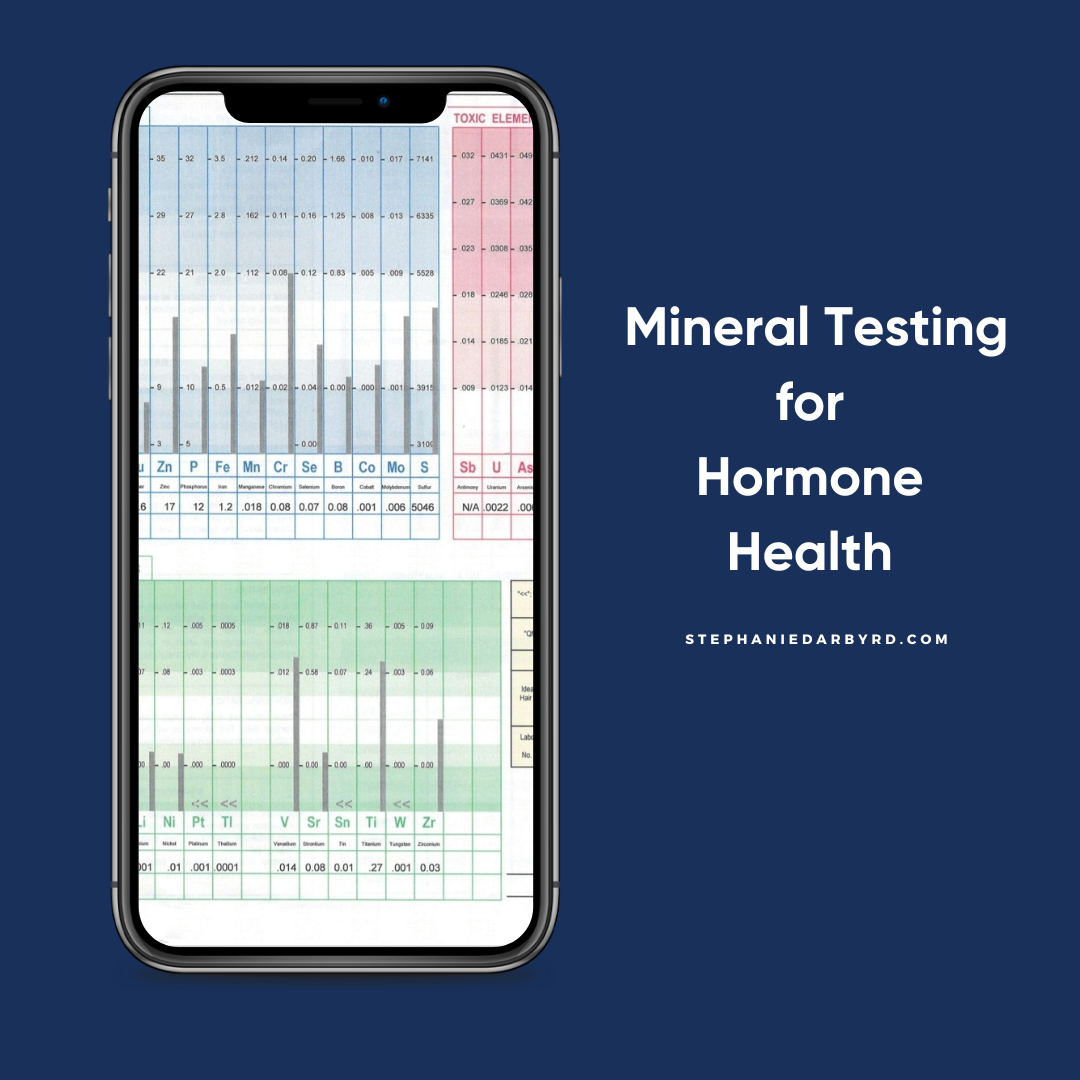Many of my 1:1 coaching clients come to me with symptoms of underactive thyroid function, yet don’t realize they might have an issue with their thyroid because their TSH levels showed up normal on blood labs. And by “normal,” the traditional range is 0.5-4.5 IU/mL. Optimal TSH is 0.5-2 IU/mL.
Testing TSH does not show the full picture. Often this looks normal because the issue isn’t with production of T4, but with the conversion of T4 to T3. Or cortisol is playing a part in skewing TSH levels.
TSH is made by your pituitary gland, not your thyroid. It tells the thyroid it needs to make more thyroid hormone (T4). Free T4 is the inactive form of thyroid hormone. On blood labs, value shows us how much thyroid hormone your thyroid is producing. Free T3 is the active thyroid hormone, which shows us how much thyroid hormone is being converted from inactive to active. Reverse T3 is what puts the brakes on thyroid hormone conversion, indicating stress. And thyroid antibodies indicate if an autoimmune condition is present (Hashimoto’s or Grave’s).
Even if you run a full thyroid panel, blood labs will show you the amount of thyroid hormone your body is able to produce. It does not show you if your body is using it well (or not using it at all).
An HTMA test looks at how your body utilizes thyroid hormone, through calcium, potassium, and heavy metals.
- High calcium indicates that calcium isn’t where it should be (in the bones and teeth) and is leaving through your cells, which shows is that it is likely binding to iodine receptors where thyroid hormone needs to bind.
- Potassium is an important piece of the puzzle because it makes our cells sensitive to thyroid hormone so they can absorb it. Without enough calcium, thyroid function is impaired.
- The calcium/potassium ratio on an HTMA lets us know if your cells are not getting enough thyroid hormone or not utilizing it properly, resulting in hypothyroidism or a sluggish thyroid. It can also let us see if your cells are getting too much thyroid hormone, resulting in an overactive thyroid or hyperthyroidism. This ratio is also impacted by adrenal function, iron, zinc, and copper, all of which we can also look at with HTMA. A REALLY high ratio is usually indicative of low calorie consumption. The thyroid needs enough energy and enough carbs to work properly.
What I love to do with clients is take any blood labs they have done in the past, compare that with their HTMA results, and then recommend further, specific thyroid labs to verify findings, if needed.
Signs of a suboptimal thyroid include:
- low body temperature (BBT)
- low pulse
- hair loss/texture changes
- irregular cycles
- depression
- anxiety, brain fog, or poor memory
- fatigue
- feeling cold frequently or having cold hands and feet
- constipation
- dry skin
- acne
- unexplained weight gain
- difficulty losing weight
My personal thyroid journey is a perfect example of this. I spent my postpartum season experiencing hair loss beyond what was normal for postpartum, as well as chronic low body temperature (optimal is 97.2-97.8 in follicular phase, and 98.4 in luteal phase; mine hovered in the high 96-low 97 range). My resting pulse was in the low 60s, I was experiencing postpartum mood swings, anxiety, fatigue, I was constantly cold, and instead of losing baby weight, I was gaining more, despite my usual diet and exercise routine.
MANY of these symptoms align with “normal” postpartum symptoms – hair loss, mood swings, fatigue, and weight gain. I figured it would even itself out after I stopped nursing, after my baby started sleeping through the night, after enough time had passed. This was a season.
Years later, it wasn’t any better. I discovered HTMA and began analyzing my own results, finding my calcium was high, magnesium was high (showing stress), sodium was very low (which impacts thyroid transport), potassium was very low, and copper was low (needed for energy production with magnesium). My calcium/potassium was also high, indicating slow thyroid hormone use. I had a history of birth control use, which affects estrogen levels and makes it hard to have enough thyroid hormone available. And I had a slow metabolic type, indicative of low thyroid function since the thyroid sets the pace for metabolism and all other processes in the body.
So what did I do next, now armed with this information?
- I assessed my overall energy intake and found I could be eating MORE. Undereating, low carb, and fasting are all thyroid depleters.
- I made sure to balance every meal and snack with protein, carbs, and fats.
- I increased my intake of copper, magnesium, sodium, and potassium rich foods. I also added in Vitamin A rich foods to help activate thyroid receptors. I have eaten a vegetarian-focused diet for YEARS and do not intent to eat meat again, which is where many of these nutrient rich nutrients can be found. However, I was able to add in grass-fed dairy and eggs, as well as adrenal cocktails and more vegetables to ensure adequate intake of these nutrients.
- I focused on meal timing, eating breakfast within an hour of waking up and eating every 3-4 hours after that. As someone who used to get up and run first thing in the morning, this took some adjusting to eating a full breakfast before a workout, but I prioritized my meals and was able to adjust my workout timing accordingly. And yes, this meant adjusting my entire day, which was a big mental shift itself.
- I spent time managing my morning stress to lower cortisol levels and increase my metabolism and energy. This means not working on my computer first thing in the morning with a cup of coffee, but instead eating breakfast on my porch and getting some sunlight and leaving screens for later in the day.
- I prioritized sleep (as best I can with little children who wake up in the night still). I ran less and walked more and lifted heavy weights to reduce stress from activity. I switched my skin care products, toothpaste, and water filter to minimize toxins that can inhibit and reduce thyroid function.
My thyroid health is still a work in progress, but these actions have greatly improved my symptoms and are important for optimal thyroid health, regardless of the degree of thyroid imbalances you may be experiencing.
Are you wondering if you have an issue with your thyroid, yet your blood labs are normal? Coaching with HTMA testing may be helpful! I don’t just make a protocol from your test results and let you figure out how to implement it all on your own. We do it together. Healing takes time. Changing our routines, our meals, our activity, our entire day is daunting, and you don’t have to go through it alone.
Want to chat more? Leave a message and let’s see if coaching is a good fit for your goals!


